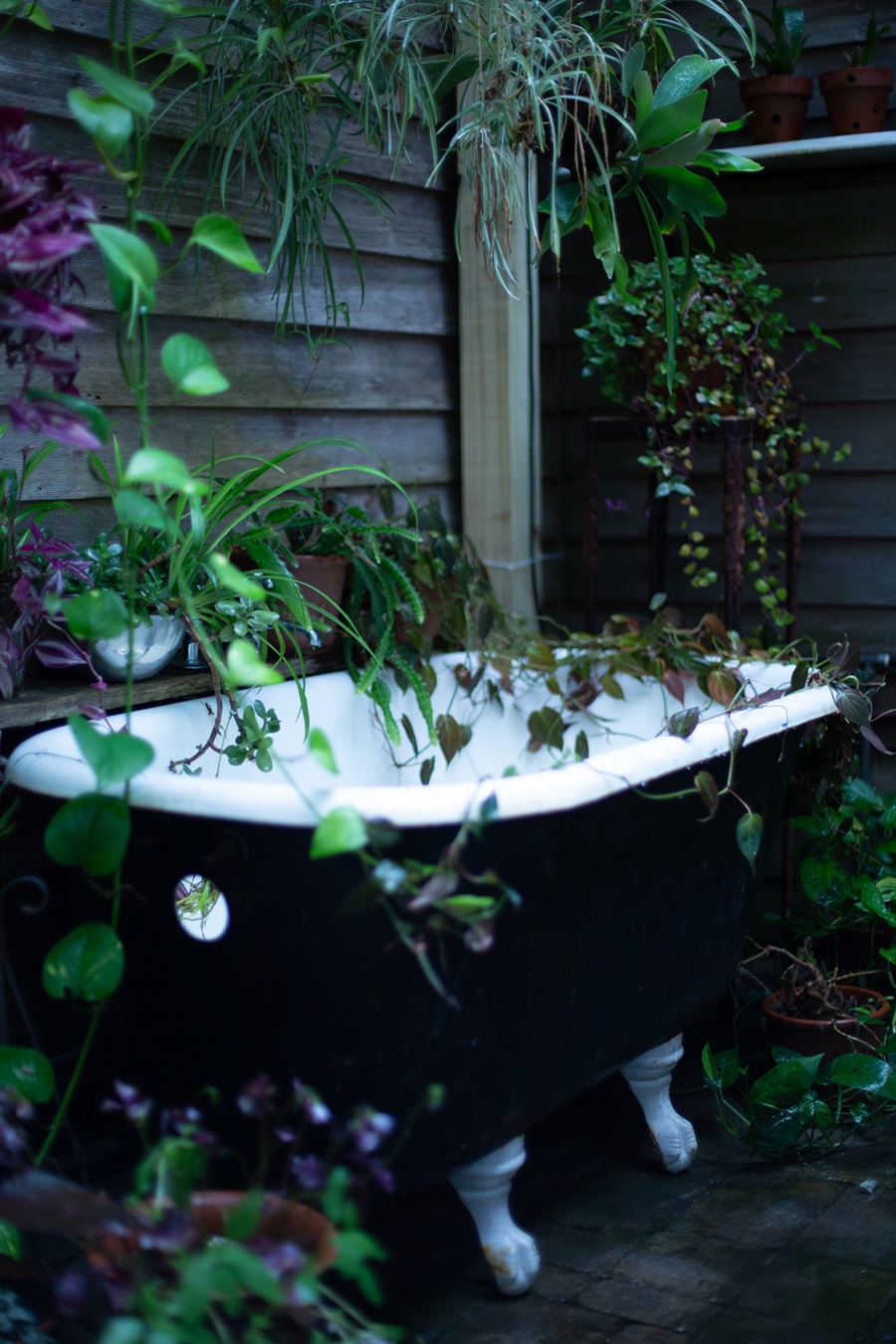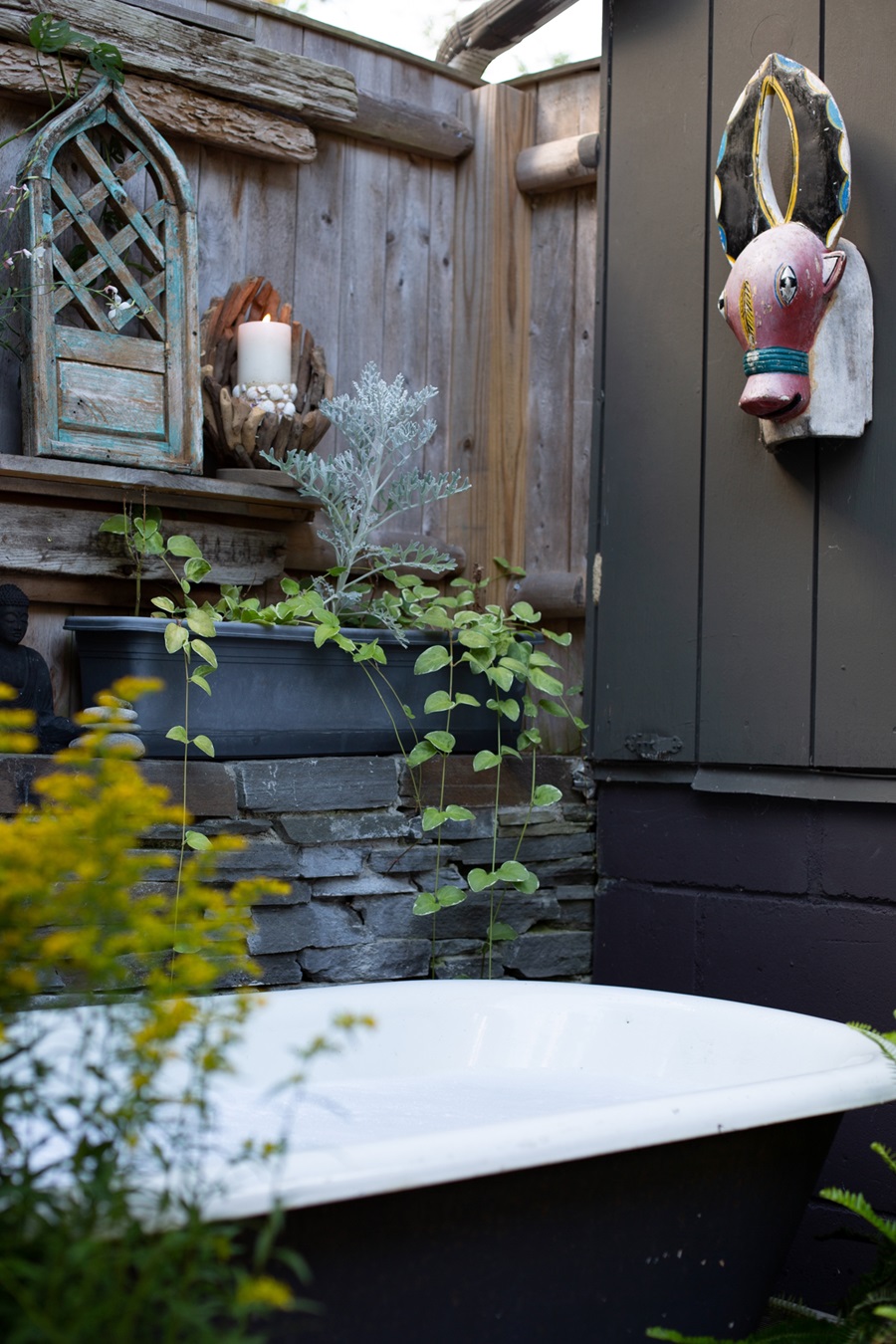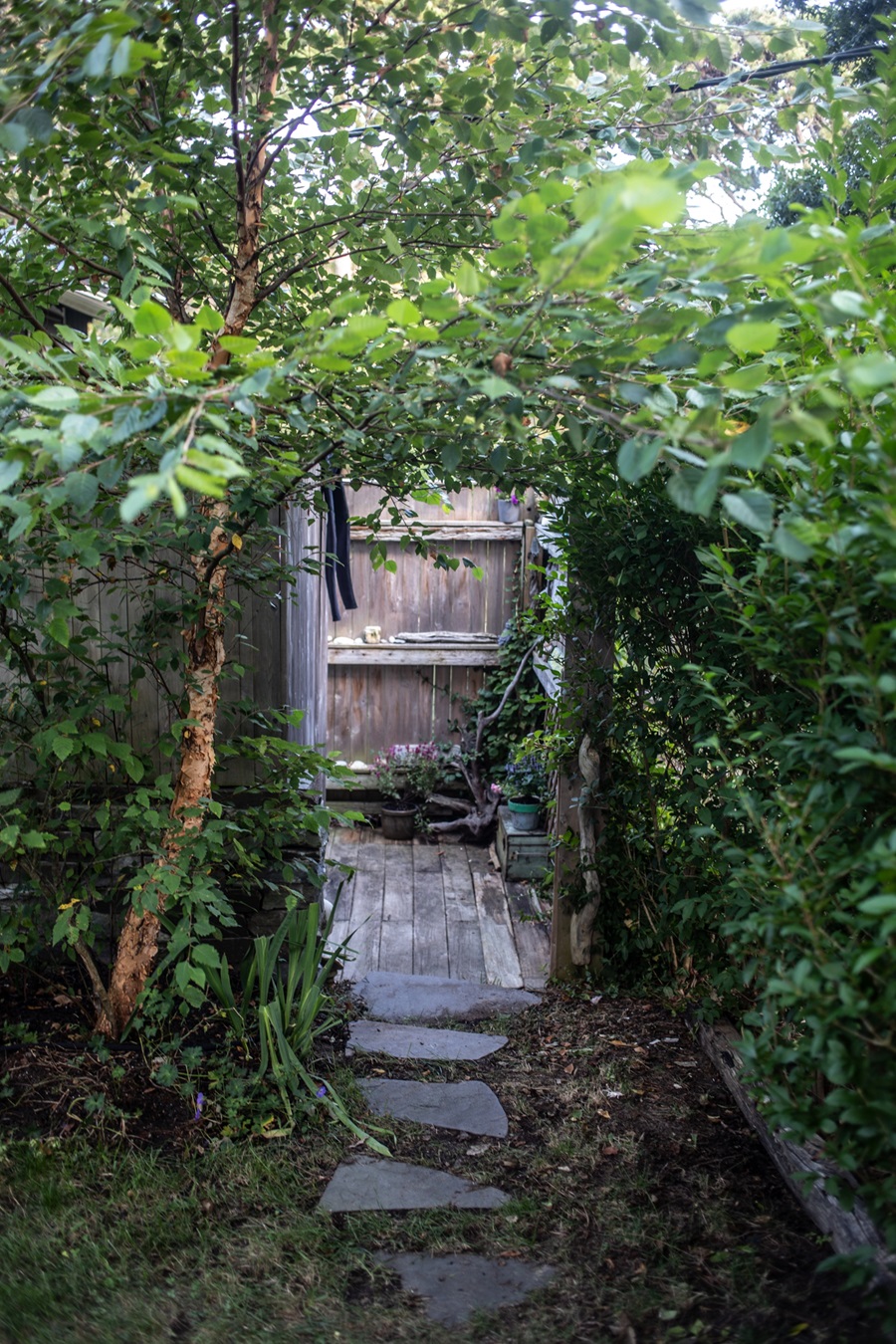Kai Potter discovered outdoor bathing at 13, when he visited friends who lived in Harwich. “They had this bathtub out in the woods,” Potter says. A fire under the tub heated the water. “I took a bath when it was snowing,” he says. “I thought, ‘Wherever I live, for the rest of my life, I have to have an outdoor tub.’ ”
He has kept this promise to himself. A small clawfoot bathtub is tucked in an unheated room built against the side of his Wellfleet house. The tub, rescued from “a dusty, creepy, haunted basement,” Potter says, came from what was then Wellfleet’s Inn at Duck Creeke.

He used to have a different bathtub in the space — an enormous one from the Lorenzo Dow Baker house in Wellfleet that took up much of the room. “I downsized,” Potter says. The old tub sits upside down in his yard. “I might put it back in,” he says. He misses its length.
Facing the tub is a small round table with two cowhide chairs — Potter’s “breakfast nook,” he says. Mounted on the wall is an outdoor shower. “The shower is for getting clean,” he says. “The tub is for chilling out.”

In the summer, hanging plants drape the walls and spread into the tub: spider plants, staghorn ferns, orchids, and monstera. Despite the jungle-like atmosphere, he says he hasn’t noticed bugs dropping into his bathwater.
Potter is a plantsman and nature writer. “I feel happiest in a space that’s full of plants,” he says. The air always smells fresh from the abundance of growing things. In the late spring, summer, and early fall, a misting system rigged into the ceiling comes on twice a day to water the greenery twining through the space. “It turns foggy and tropical in here,” Potter says.
Antique windows of various sizes form one patchwork wall. While the window-wall is partly for aesthetics, “I also wanted it to hold some heat and block the wind,” Potter says. “I like cozy, small spaces.”

But he also likes being able to see the sky while in the tub. “Normally, we associate bathing with being inside and closed off,” Potter says. “It’s really great to be able to take that ritual outside and do it while you’re still immersed in the world.”
Andy Jacob, an artist and oyster farmer, also has an antique bathtub. He bought it in Boston, where it had occupied the bathroom of a fifth-floor walk-up in the Back Bay. A renovation crew carried the tub down to the street, where Jacob traded Wellfleet oysters plus some cash for it. After he brought the tub home, it sat in Jacob’s back yard for six months before he had the “funds, friends, and time” to make it work outdoors. It was worth it, he says: “It’s luxurious — a poor man’s Jacuzzi.”

Jacob dismantled an old wooden ramp found on his property and set aside the wood. Then, using a mini skid loader, he and his brother-in-law, James Kearing, built a stone retaining wall behind the house. His vision was to create a hidden space for the tub by sending a bather through a series of small rooms. There are no doors, Jacob says, “but my neighbors can’t see me naked.”
Jacob spends a lot of time in the ocean, so the outdoor bathing area is practical as well as aesthetically pleasing. After oystering or surfing, he heads in with his waders or wetsuit on to avoid bringing sand into the house.

A birch tree grows by the entrance to Jacob’s bathing chambers. Its branches gently bend over the doorway. “You walk through and follow these big stone steps into the shower, which is filled with ferns and succulents,” he says. Beyond that, the bathtub sits against the stone wall. Within arm’s reach is a little shelf for a candle. An African mask from the Wellfleet flea market surveys the scene from the wall.
Jacob takes baths outside in his “oasis” from April to December. The best months, he says, are September and October. “The air is crisp, but you’re so warm in there,” he says. “You feel like you’re in the womb.” At night, wine glass in hand, the stars blazing above, “you can hear the horned owls communicating with each other. That’s pretty spectacular.”
